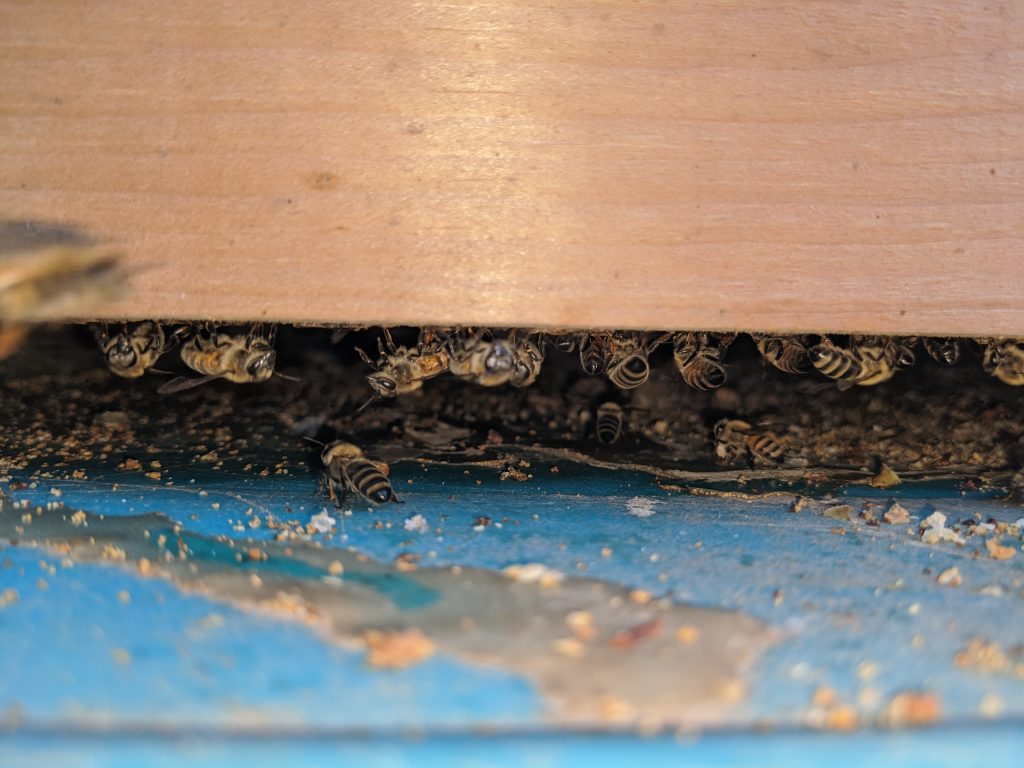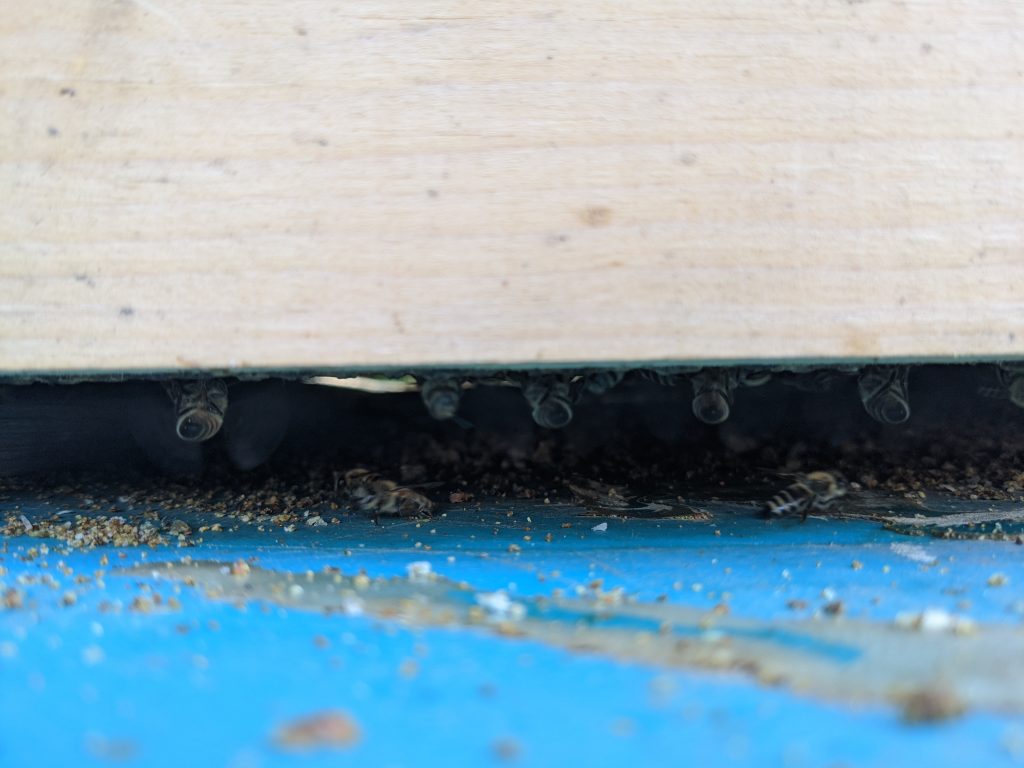When the bees first moved in, they moved into a stack of boxes sitting on a kid’s plastic play table. Not exactly the standard setup.

The day after they moved in, I managed to wedge some boards underneath the bottom of the hive at the sides and back to give them a front entrance, then 3D printed an entrance reducer, just to help them defend against any bees that might try to attack them while they were weak from moving.
As the hive got stronger and started bringing in more nectar, the table starts bowing more and more. It doesn’t take long for the bees to bring in a decent weight of nectar and honey. As I write this in November, I’d guess the hive is nearly 150lbs.
I also wanted to reconfigure the boxes as it wasn’t quite in the order it should have been. Typically you do the big boxes on the bottom for brood, then smaller ones on top for honey. This makes it easier to take honey off later when you want.
So, I built a new hive stand for them out of some old hardwood from a pallet I had lying around.

I wanted it off the ground – that helps keep the ants and ants away a bit anyways, not completely. It also help keep skunks away. Turns out skunks love to eat bees. Now, this might actually not be high enough, but hopefully it will help anyways.
But, I wasn’t quite ready to move it yet. You see, when a bee colony moves in, the standard advice is to leave them alone for at least 10-14 days. The reason is that you want them to start to make it their home. You want them to start bringing in nectar, start laying eggs, raising brood, because if you don’t, then they might just decide “well, this isn’t a very safe place to be” and without those things in the hive, theirs no reason to stay. But, if you can wait until they’re established, well, now they have to abandon a lot of resources, and that’s more trouble than a pesky human who peaks his head in every once and a while.
So, while I built the stand, I wasn’t ready to move it until the first time we opened the hive.
In the meantime though, here’s some pictures of the bees hanging out at their new bottom entrance. You can see all the mess they’ve made below from cleaning up the comb they inherited.
And the last picture, you can see them hanging there, fanning to either reduce the heat in the hive or reduce the humidity, or both.




